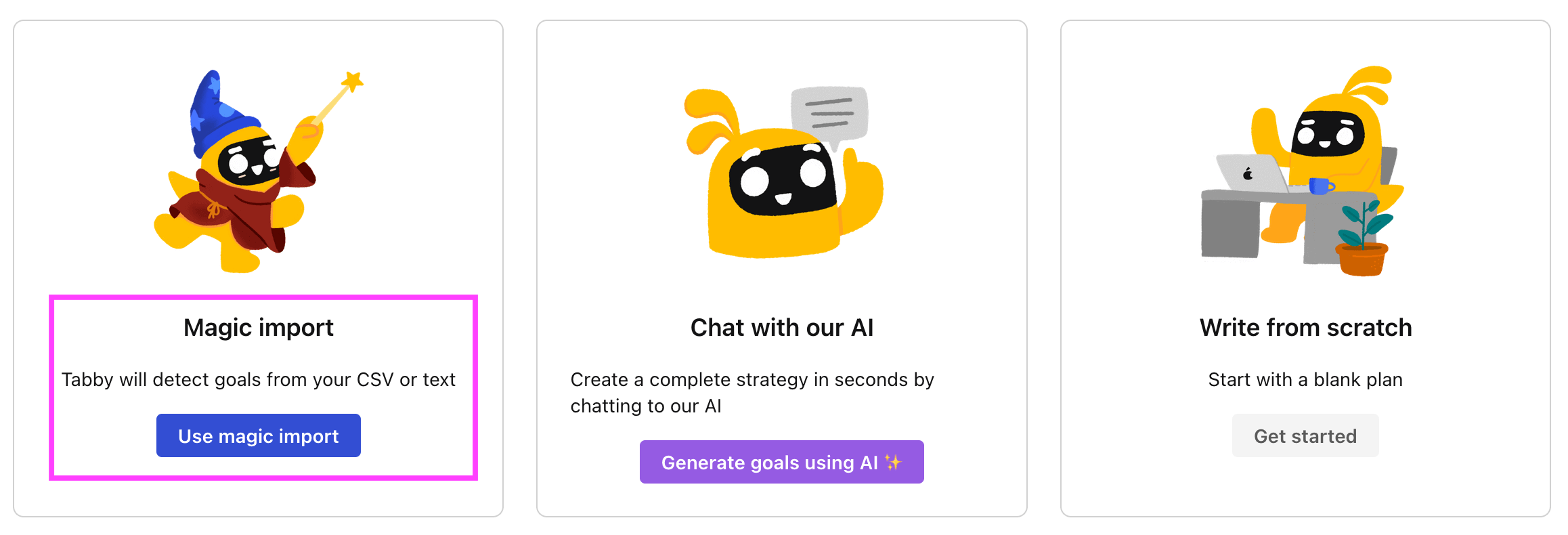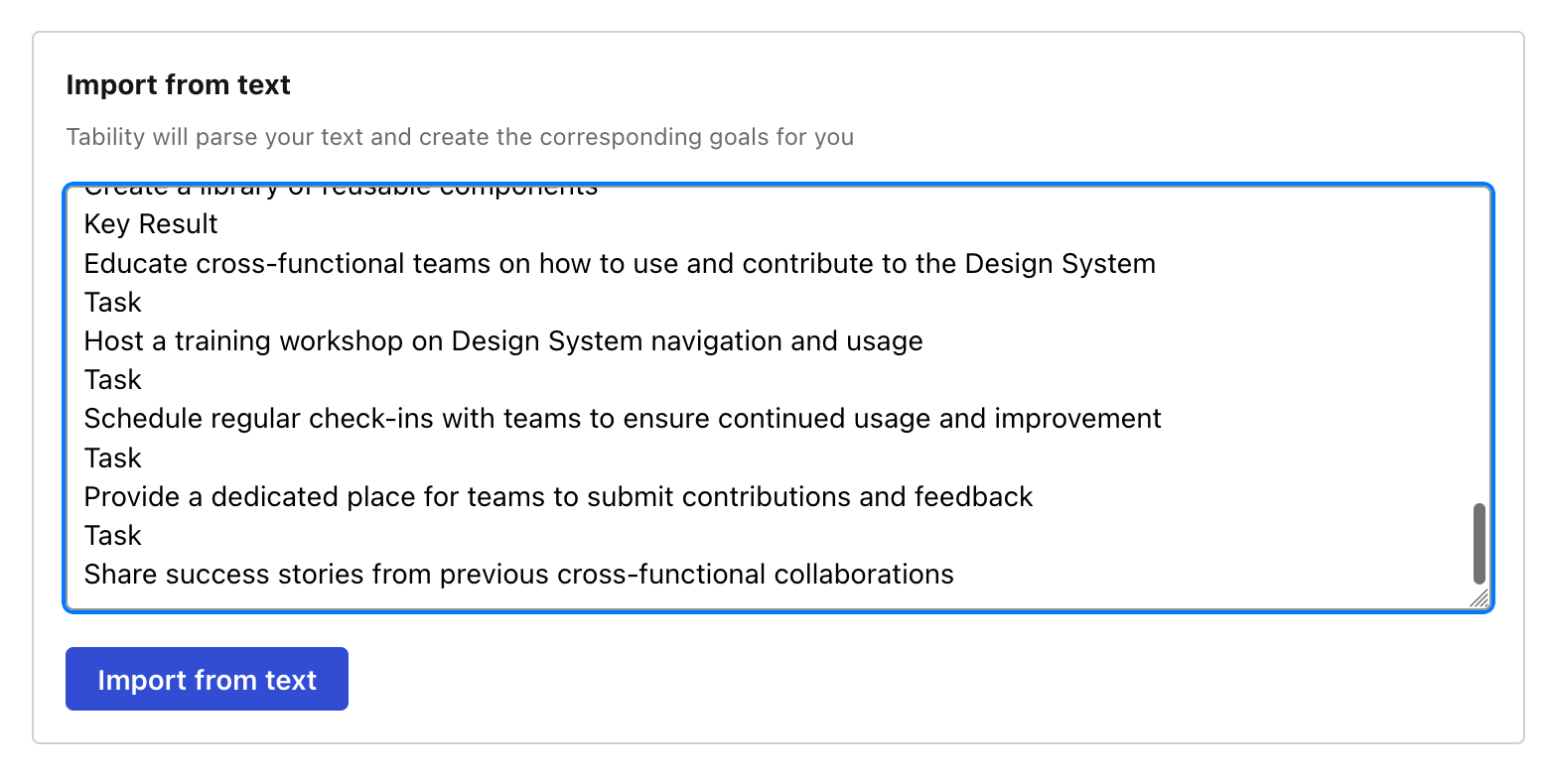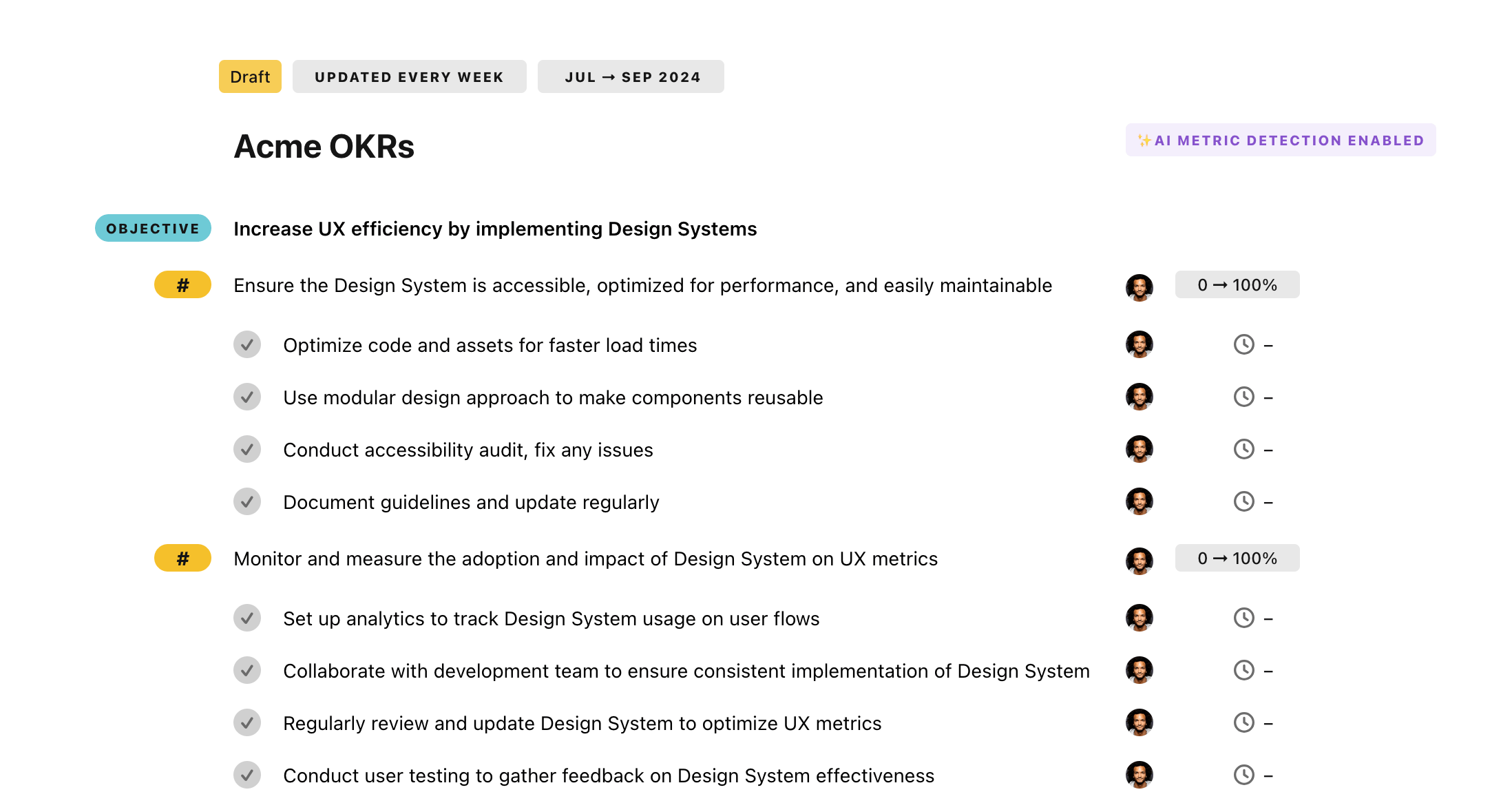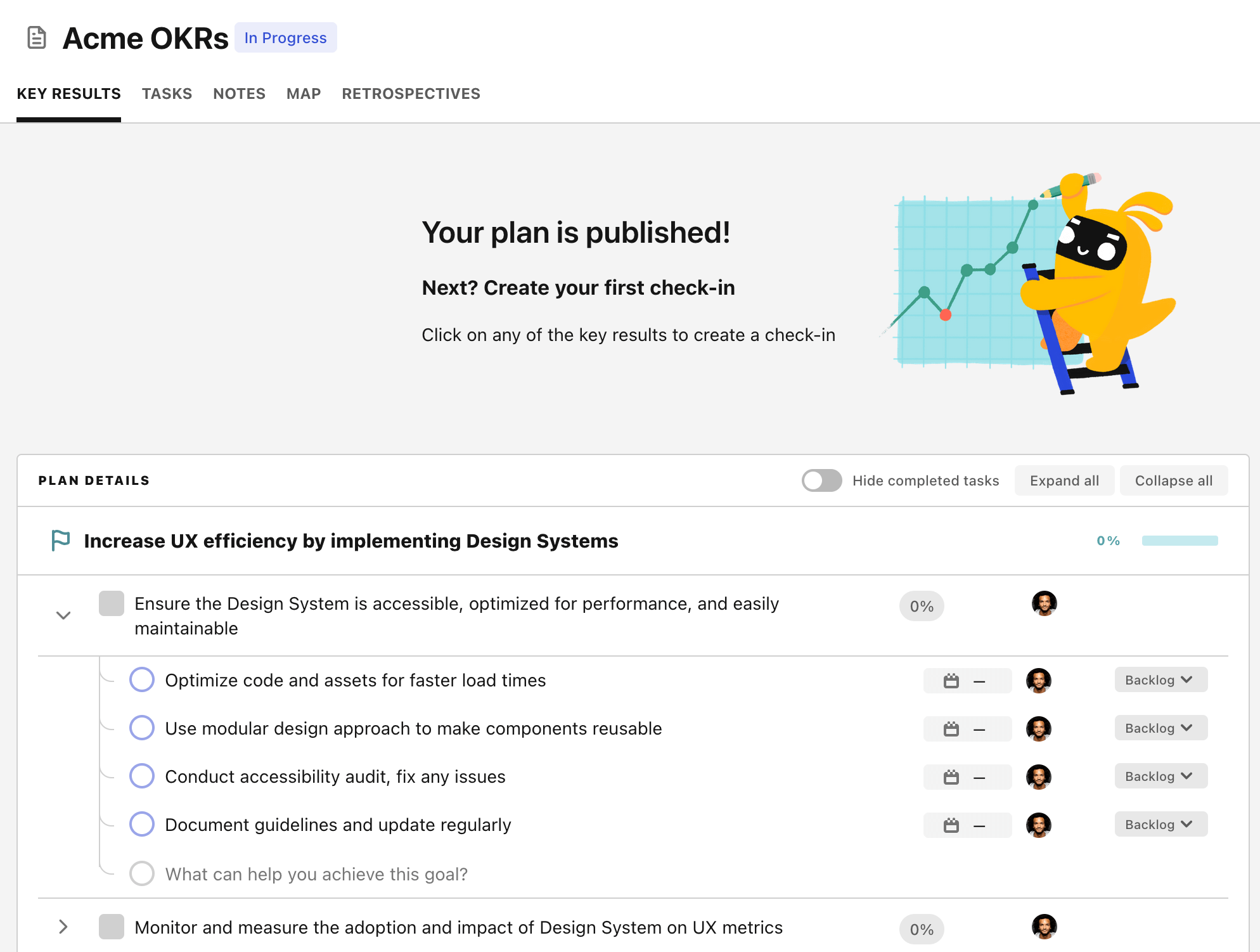OKR template to improve documentation utilization
Your OKR template
The second objective focuses on using documentation as a primary tool for resolving complex operational issues. Thus, it calls for making the documents easily accessible and well-organised, updating them regularly, training employees on their usage, and monitoring document usage trends. The goal is to resort to documentation for resolution of complexities in 80% of the cases.
Thirdly, having set impressive documentation goals, it seeks to ensure that progress against these goals delights both team members and managers. This requires the regular communication of updated documents, soliciting feedback on their usefulness and clarity, and promoting their utilization for decision making. Success is linked to getting appreciated for these initiatives.
Lastly, it underscores the importance of adopting a learning approach to enhance documentation and knowledge management skills. This involves enrolling and completing 4 related online courses that enrich different aspects of documentation and acknowledging knowledge learned from such exercise towards improving existing practices.
ObjectiveImprove documentation utilization
KRIncrease average time spent on reading documentation by 15 minutes per week
Create a user-friendly index for easy navigation within the documentation
Incorporate interactive elements such as quizzes to engage readers in the documentation
Use visual aids like diagrams and infographics to enhance comprehension of the content
Provide concise and relevant examples throughout the documentation to clarify concepts
KRUtilize documentation for problem resolution in at least 80% of complex cases
Ensure that comprehensive documentation is easily accessible and organized for reference
Regularly update and maintain documentation to reflect the latest information and procedures
Train employees on effectively utilizing documentation for problem resolution
Implement a system to track and monitor the usage of documentation for problem resolution
KRReceive positive feedback on increased documentation utilization from peer or manager
Set achievable goals for increasing documentation utilization and track progress
Share updated documentation with peers and manager regularly
Request feedback and suggestions on the usefulness and clarity of the documentation
Encourage peers to utilize the documentation by highlighting its benefits
KRComplete at least 4 online courses related to documentation and knowledge management
Enroll in each of the selected courses and complete the required modules and assignments
Choose 4 online courses that cover different aspects of documentation and knowledge management
Take notes and apply acquired knowledge to improve current documentation and knowledge management practices
Search for online platforms offering courses related to documentation and knowledge management
How to edit and track OKRs with Tability
You'll probably want to edit the examples in this post, and Tability is the perfect tool for it.
Tability is an AI-powered platform that helps teams set better goals, monitor execution, and get help to achieve their objectives faster.
With Tability you can:
- Use AI to draft a complete set of OKRs in seconds
- Connect your OKRs and team goals to your project
- Automate reporting with integrations and built-in dashboard
Instead of having to copy the content of the OKR examples in a doc or spreadsheet, you can use Tability’s magic importer to start using any of the examples in this page.
The import process can be done in seconds, allowing you to edit OKRs directly in a platform that knows how to manage and track goals.
Step 1. Sign up for a free Tability account
Go tohttps://tability.app/signup and create your account (it's free!)
Step 2. Create a plan
Follow the steps after your onboarding to create your first plan, you should get to a page that looks like the picture below.

Step 3. Use the magic importer
Click on Use magic import to open up the Magic Import modal.
Now, go back to the OKR examples, and click on Copy on the example that you’d like to use.

Paste the content in the text import section. Don’t worry about the formatting, Tability’s AI will be able to parse it!

Now, just click on Import from text and let the magic happen.

Once your example is in the plan editor, you will be able to:
- Edit the objectives, key results, and tasks
- Click on the target 0 → 100% to set better target
- Use the tips and the AI to refine your goals
Step 4. Publish your plan
Once you’re done editing, you can publish your plan to switch to the goal-tracking mode.

From there you will have access to all the features that will help you and your team save hours with OKR reporting.
- 10+ built-in dashboards to visualise progress on your goals
- Weekly reminders, data connectors, and smart notifications
- 9 views to map OKRs to strategic projects
- Strategy map to align teams at scale